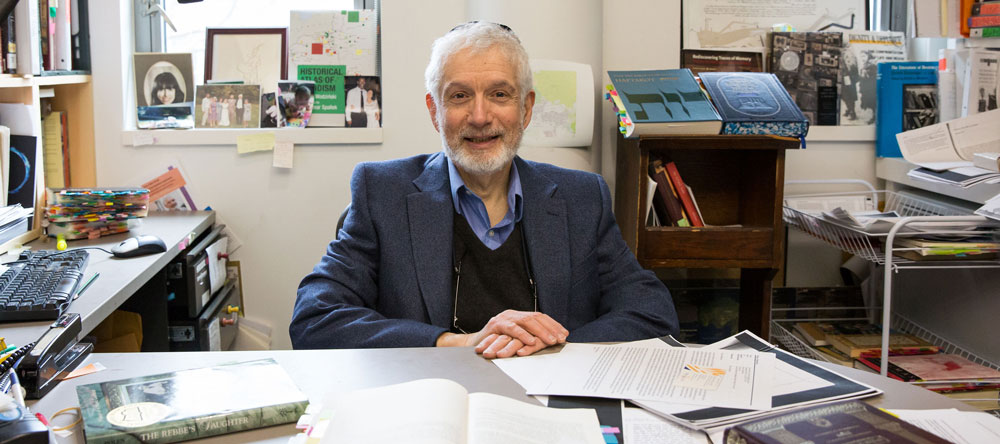Pluralistic Perspectives Passover Bares the Anatomy of Miracles

The story of the exodus from Egypt is filled with descriptions of signs, wonders and miracles. The Nile turns to blood, the waters of the Red Sea split, manna falls from heaven. Yet most contemporary celebrations of Passover do not emphasize these occurrences, preferring rather to focus on the concept of freedom and its social, psychological and political implications. Talk of miracles is quite out of fashion in our day and age. The scientific worldview has so dominated our thinking that there is simply no room left for the miraculous.
The fact is that the Torah itself displays a marked ambivalence towards miracles. We are warned in Deuteronomy 13 not to be impressed by the signs and wonders of a false prophet, and a famous Talmudic passage (Bava Metzi’a 59b) establishes that even miraculous testimony cannot confirm the validity of a halakhic opinion, for “the Torah is not in heaven.”
It is considered a sin to endanger one’s life by relying on miracles; a sick person must seek healing from a physician, and must not rely on prayer alone for salvation. Finally, the Midrash states that the biblical miracles were not violations of the natural order, but were preordained from the beginning: “God made a stipulation with the Sea at the Creation that it would one day part before the Children of Israel.”
While some medieval Jewish philosophers attempted to restrict the role of the miraculous, others, especially Nahmanides, expanded it. Nahmanides taught that many seemingly natural occurrences are in fact “hidden miracles.” Hasidic masters such as Rabbi Schneur Zalman of Liadi taught that the universe is created anew each instant, a perspective which tends to obliterate the notion of natural law completely.
Already in ancient times there were attempts to explain the biblical miracles as being the result of the fortuitous juxtaposition of natural phenomena. In our own day some have grasped upon quantum theory, especially Heisenberg’s Uncertainty Principle, as providing the window of opportunity for the miraculous to break through the natural order.
Yet all of these attempts leave unexplained the most salient feature of the miraculous: its relevance to human beings. The miracle at the Red Sea was not so much that the east wind caused the sea to part, as that it did so just in time for the Children of Israel to escape the pursuing Egyptians.
Miracles are miracles to the extent that we perceive them to be so; they must connect in some way with human destiny, and must reveal a purpose beyond that of random, chaotic nature. In experiencing a miracle, and in believing that one took place, we encounter an Intelligence, a Personality, which expresses itself in the workings of nature, but is not identical with nature nor bound by it. One consciousness becoming aware of another: that is the essence of the miraculous.
In Talmudic literature, the parting of the Sea, which took place on the seventh day of Pesach, is thought of primarily as a moment of Divine revelation, when the people pointed with their fingers to a manifestation of the Divine Presence and said, quite literally, “This is my God.” Our contemporary uneasiness with the thought of miracles is in fact an uncomfortableness with the biblical notion of a personal God who can overrule the natural order.
In our search for a less anthropomorphic conception of the deity, we may perhaps have become too sophisticated for our own good. As C.S. Lewis pointed out, in rejecting a God who resembles us, some of us have substituted a conception of God resembling a vast, diffuse tapioca pudding.
Taking God seriously requires entertaining the possibility of miracles. This is not a prescription for credulity. As a great Hasidic master once said, if you deny every tale of the miraculous, you are a heretic; but if you believe every tale, you are a fool.
Especially at this time in history, Jews must recapture the “legacy of wonder,” the sense of “radical amazement,” of which Heschel spoke. We must learn to look at the world, but see beyond it.
Viewing the world in the scientific mode is looking intently at a lifeless store manikin. Discovering the miraculous is like noticing that the manikin has just winked. If we look at the world with different eyes, we may yet discover it winking back at us.
If indeed it is true, as the Haggadah puts it, that each generation can and must see itself as if it has just left Egypt, then it is not too much to hope that we may still recapture the sense of the miraculous, perceiving the Divine personality which stands behind, and shines through, the natural order.
Dr. Nehemia Polen is Professor of Jewish Thought at Boston’s Hebrew College. He is the author of The Holy Fire: The Teachings of Rabbi Kalonymus Shapira, the Rebbe of the Warsaw Ghetto (Jason Aronson, 1994, 1999), and is a contributing commentator to My People’s Prayer Book, a multi-volume siddur incorporating diverse perspectives on Jewish liturgy (Jewish Lights). He received his Ph.D. from Boston University, where he studied with and served as teaching fellow for Nobel laureate Elie Wiesel.
Interested in a possible career in the rabbinate? Read Rabbi Dan Judson’s article “Jewish Lessons on Meaningful Work.“ Rabbi Judson teaches history, oversees the professional development program, and serves as the placement director for the Hebrew College Rabbinical School. He has a PhD in Jewish history from Brandeis University.

